Nokia NRS II Composite Exam 4A0-C01 Dumps
4A0-C01 Nokia NRS II Composite Exam is a combination exam instead of 4A0-101,4A0-103 and 4A0-104 exams. PassQuestion has Nokia NRS II Composite Exam 4A0-C01 Dumps which can ensure you pass Network Routing Specialist(NRS) certification 4A0-C01 exam and gain certificate, but also can help you save a lot of time. PassQuestion absolutely assures the candidates will pass the Nokia 4A0-C01 exam successfully on the first time.Obtain PassQuestion 4A0-C01 questions and answers and get a desired result with full confidence and ease.
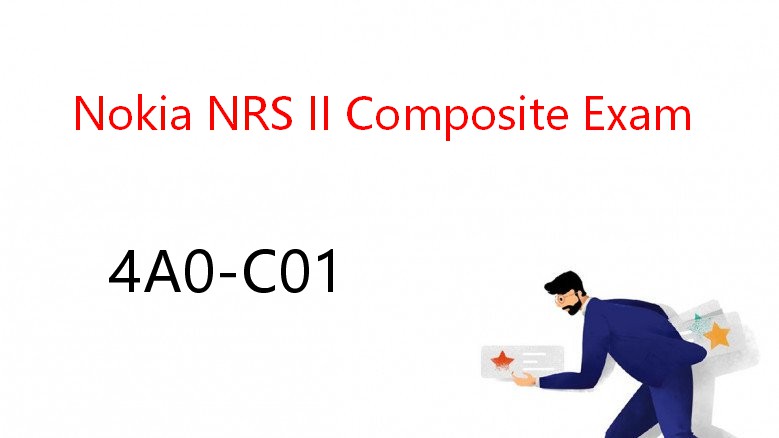
4A0-C01 Exam Details - Nokia NRS II Composite Exam
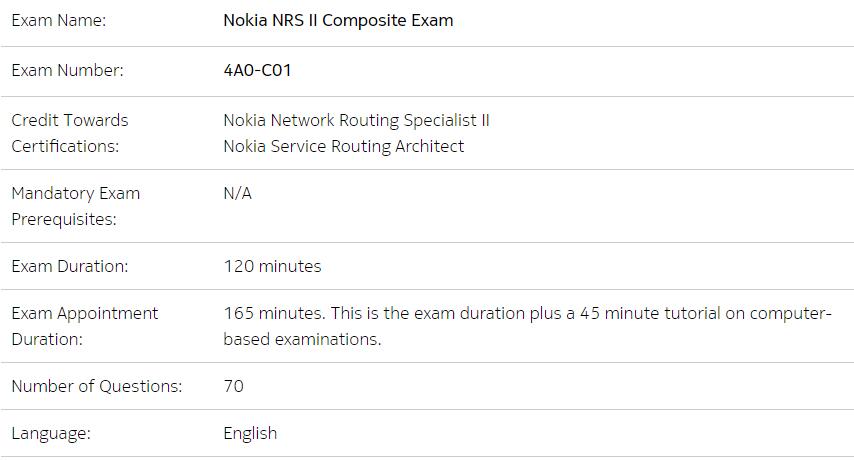
The NRS II Composite Exam combines content from the three individual exams required for NRS II certification into a single, integrated exam. The three individual exams are:
- Nokia Interior Routing Protocols (4A0-101)
- Nokia Multiprotocol Label Switching (4A0-103)
- Nokia Services Architecture (4A0-104)
The NRS II Composite Exam will be used for both certification and recertification purposes:
- For NRS II certification, candidates will have the option to write the single NRS II Composite Exam or write the three individual exams outlined above.
- For NRS II recertification, the NRS II Composite Exam replaces the previous recertification requirement, which was to write the Nokia Services Architecture exam (4A0-104). Writing the 4A0-104 exam is no longer an option for NRS II recertification.
NRS II Composite Exam General Topics
Nokia Interior Routing Protocols
Nokia Multiprotocol Label Switching
Nokia Services Architecture
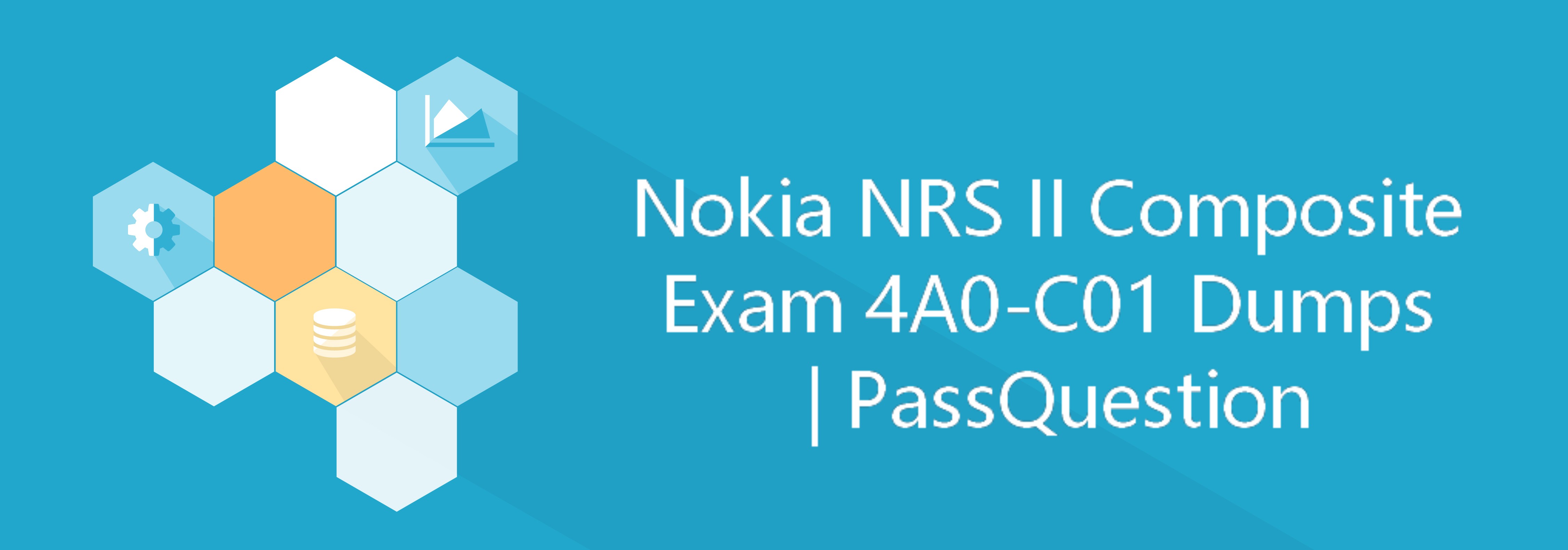
View Online Nokia NRS II Composite Exam 4A0-C01 Free Questions
1.(Topic 1) Which of the following statements regarding OSPF routing updates on a multi-access network segment is true?
A. In multi-access networks, a DR and BDR are elected only if there are more than two routers connected to the network segment.
B. In multi-access networks, a DR and BDR are elected only if the subnet masks on the router interfaces are less than /30
C. In multi-access networks, a DR and BDR are elected. To ensure resiliency, both the DR and BDR send link-state advertisements describing the network.
D. In multi-access networks, a DR and BDR are elected. The DR sends link-state advertisements describing the network.
Answer: D
2.(Topic 1) Click the exhibit button
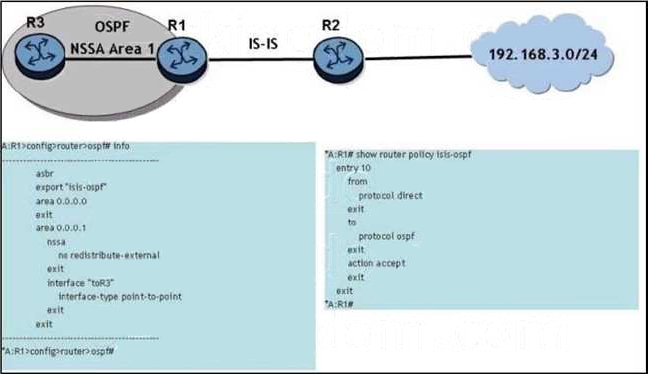
The 192 168 3.0/24 network is learned on router R1 via IS-IS Given the OSPF configuration shown, and assuming that the OSPF adjacency between routers R1 and R3 is up, why is the 192 168.3.0/24 route not in router R3's route table? (Choose two)
A. The route policy should be applied as in import policy
B. The no-redistribute-external command is used on router R1
C. The route policy is incorrect. It should say "from protocol ISIS" rather than "from protocol direct".
D. It is not possible to be an ASBR and an NSSA. The ASBR configuration should be removed.
E. The interface between routers R1 and R3 needs to be in OSPF area 0 rather than OSPF area 1 because a backbone area
must always exist.
Answer: B,C
3.(Topic 1) Click the exhibit button.
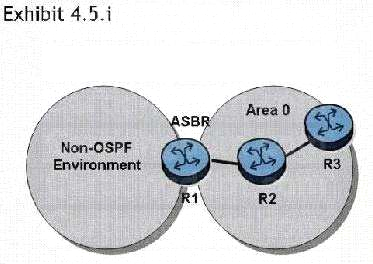
In the topology shown, router R1 is an ASBR configured to export external routes to OSPF.
How many type 4 LSAs will be present in the network?
A. One.
B. One for each of the routers in area 0
C. One for each of the external routes exported by router R1.
D. Type 4 LSAs are not generated in this network topology.
Answer: D
4.(Topic 1) When a router receives an IP packet, but does not find a match in the routing table for the destination IP address, what actions are performed by the router?
A. The packet is flooded out all router interfaces.
B. The packet is dropped and an ICMP unreachable message is sent back to the source.
C. The packet is silently discarded.
D. The packet is flooded out all interfaces and an ICMP unreachable message is sent.
Answer: B
5.(Topic 1) How are LSPs acknowledged on IS-IS broadcast links?
A. The LSP is acknowledged by sending a PSNP PDU.
B. The LSP is acknowledged by sending an LSP PDU.
C. The LSP is acknowledged by sending a Hello PDU.
D. LSP are not acknowledged on broadcast links. The DIS sends periodic CSNPs to maintain database synchronization
Answer: D
6.(Topic 1) Which of the following statements regarding the election of the designated router (DR) by OSPF routers are true? (Choose two)
A. The router with the lowest priority is the DR.
B. The router with the highest priority is the DR.
C. If priorities are the same, the DR is chosen based on the lowest RID.
D. If priorities are the same, the DR is chosen based on the highest RID.
Answer: B,D
- TOP 50 Exam Questions
-
Exam
All copyrights reserved 2025 PassQuestion NETWORK CO.,LIMITED. All Rights Reserved.

